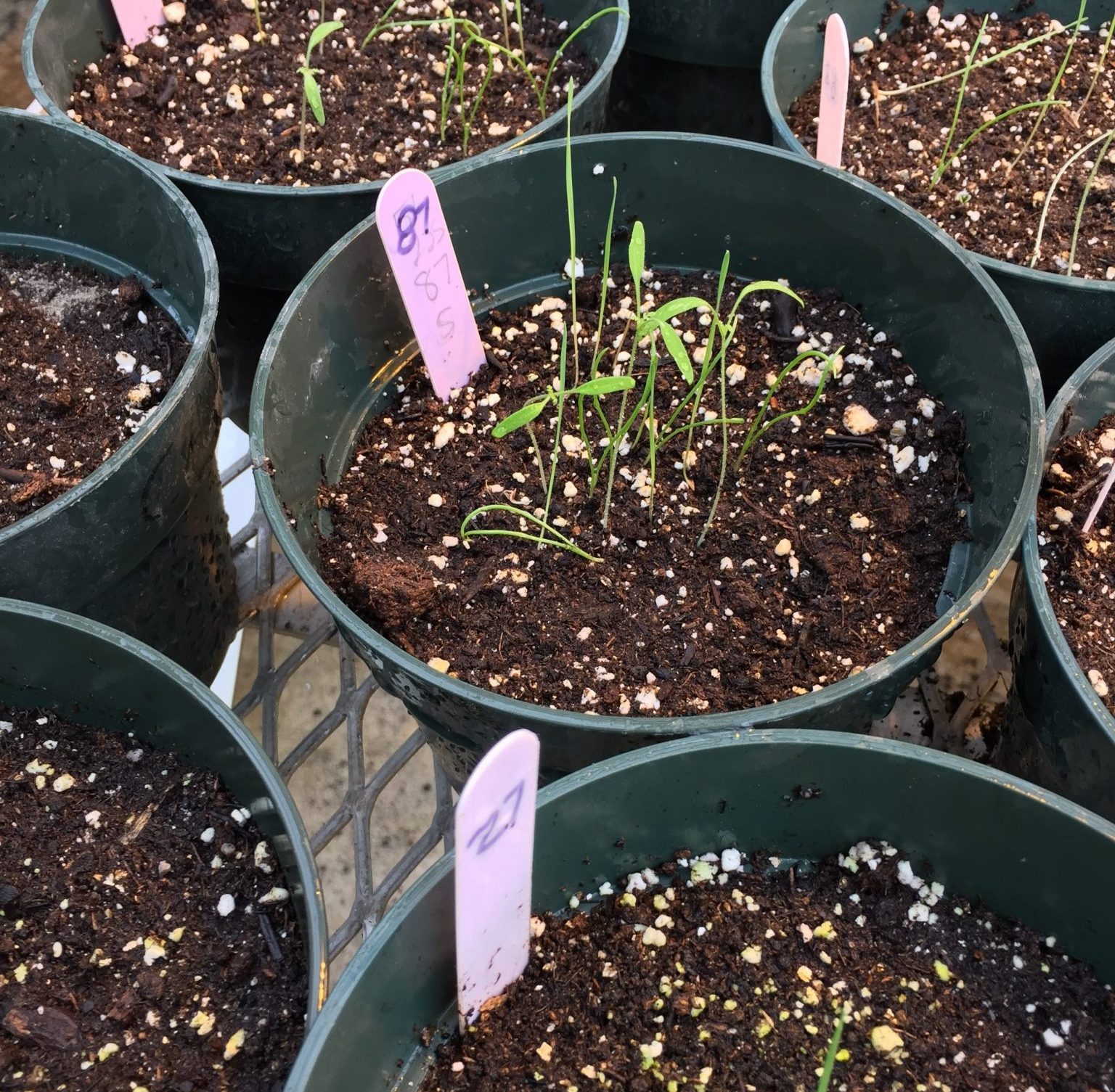Salvia columbariae, Phacelia tanacetifolia, and Plantago insularis are key phytometers (plants that indicate ecosystem conditions) in the San Joaquin Desert of California. As the highly invasive exotic Bromus madritensis colonizes in this non-native environment it lacks the environmental suppressors and competitors it faces in its native habitat. This leads to native Californian desert ecosystems to shift to a new model where native plants are excluded due to competitive disadvantages. decreases in native biodiversity are directly correlated to the health of an ecosystem, ecosystem services, resiliency to climate change, as well as the resources and for these reasons, identifying methods of restoration ecology is crucial.
Using my 3 factor (ambient light vs shaded conditions, low vs high B.madritensisdensity, native seeds at 6 levels of density (0,3,6,9,15, or 30 natives)) greenhouse competition trials I aim to identify what density of native species must present in a pot with a surface area of 153cm2 to outcompete an exotic one.I have previously run an experiment to identify optimal density in pots of the same surface area using each of the native species in monoculture, implementing the same light versus shade conditions with a total of 365 replicates. I will assess if I am able to compare these differences in optimal monoculture mix density to a polyculture mix with invader presence. If my data finds an optimal density using these methods, I hope to further my research and apply my findings to population ecology by estimating necessary population metrics required to apply this to ecosystem for large scale restoration and contribute it towards field work.
My experiment currently contains 200 pots, 100 of which are shaded by a bamboo structure I suspended. Germination has begun, yet it is still difficult to differentiate among species this early on. As predicted, the shaded individuals have demonstrated leggy growth as they reach towards the light source, yet there seems to be leaf production in possibly higher concentrations in the shaded pots than the ones experiencing ambient light. It appears that the shaded pots have a higher germination and growth rate (measured by number of individuals and number of leaves per pot). Is it possible that the shade-preferring B.madritensis is facilitating growth through positive density dependence? Am I witnessing an Allee effect in the form of environmental conditioning? Or is the answer as simple as light levels in the shaded conditions being sufficient for the natives as well as B.madritensis? Using the metrics of germination of species per pot as well as leaves per species and finally above ground biomass at the end of my experiment I will continually assess success through the different factors and levels I have designed and implemented in my experiment and hope to achieve a successful conclusion.
